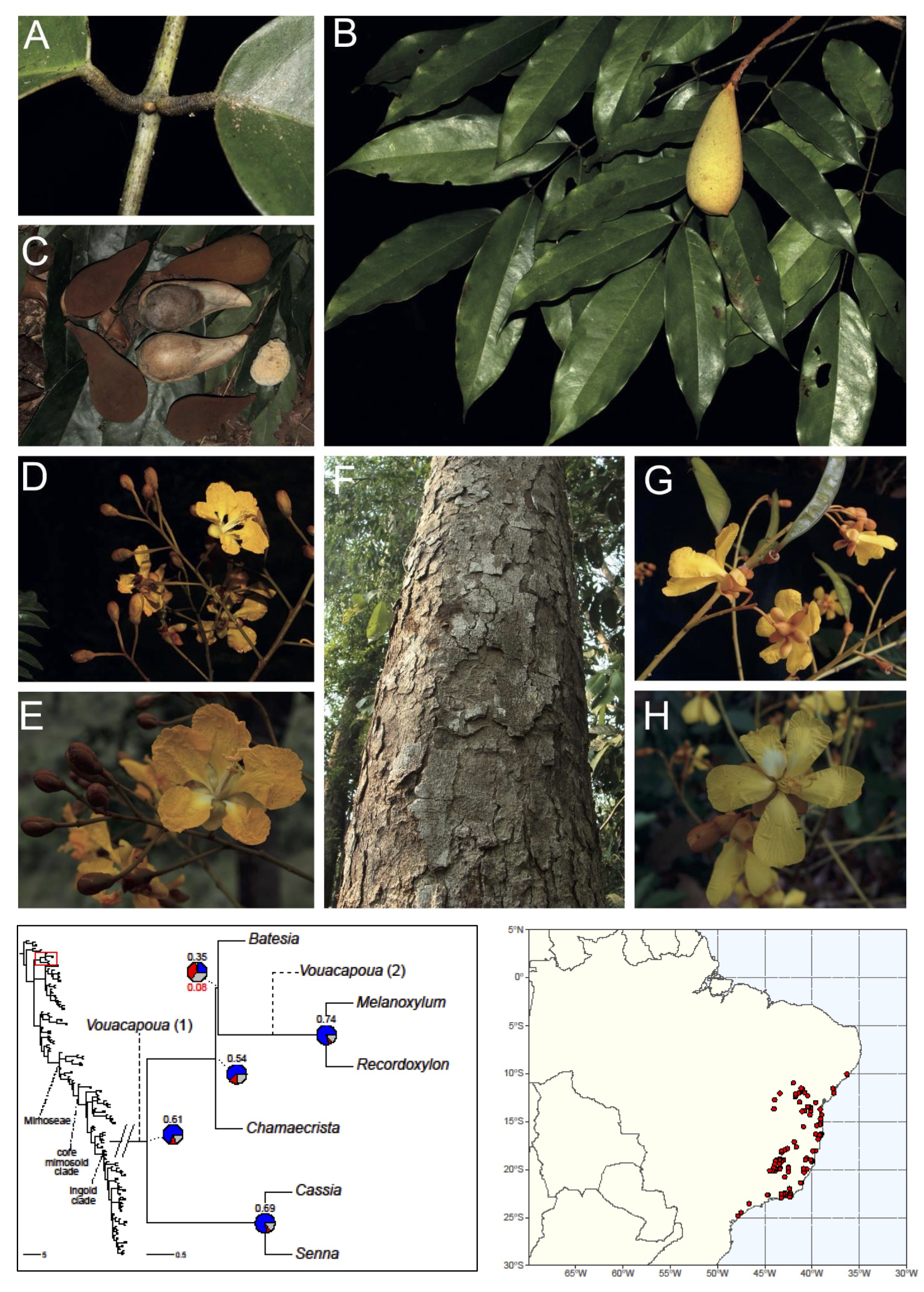ADVANCES IN LEGUME SYSTEMATICS 14.
Classification of Caesalpinioideae. Part 2 – Higher-Level Classification
Anne Bruneau (Université de Montréal, Canada)
Luciano Paganucci de Queiroz (Universidade Estadual de Feira de Santana, Brazil)
Jens J. Ringelberg (University of Edinburgh, U.K.)
Caesalpinioideae is the second largest subfamily of Leguminosae with ca. 4680 species and 163 genera. It is an ecologically and economically important group formed of mostly woody perennials that range from large canopy emergent trees to functionally herbaceous geoxyles, lianas and shrubs, and which has a global distribution, occurring on every continent except Antarctica. Following the recent re-circumscription of 15 Caesalpinioideae genera presented in Advances in Legume Systematics 14, Part 1, published in the journal PhytoKeys in 2022 (https://phytokeys.pensoft.net/issue/3247) and edited by Colin E. Hughes, Luciano P. de Queiroz and Gwilym P. Lewis, Part 2 presents a new higher-level classification and synopsis of genera for the subfamily. Based on a phylogenomic analysis of 997 nuclear gene sequences for 420 species and all but five of the genera currently recognised in the subfamily (Ringelberg et al. 2022), 45 legume experts from 14 countries have come together to propose this new classification of Caesalpinioideae. The paper is in press for publication in PhytoKeys in early 2024.
 Examplar plate from the generic synopsis of Caesalpinioideae presented in ALS 14, Part 2. A–F: Batesia, Melanoxylum, Recordoxylon and Vouacapoua floral, fruit and leaf diversity (tribe Cassieae) (Photo credits: D Cardoso, G Pereira-Silva). Below left: Schematic phylogeny showing generic relationships in tribe Cassieae and the placement of the tribe in the genus-level phylogeny of Caesalpinioideae. Below right: Distribution of the genus Melanoxylum based on quality-controlled digitised herbarium records.
Examplar plate from the generic synopsis of Caesalpinioideae presented in ALS 14, Part 2. A–F: Batesia, Melanoxylum, Recordoxylon and Vouacapoua floral, fruit and leaf diversity (tribe Cassieae) (Photo credits: D Cardoso, G Pereira-Silva). Below left: Schematic phylogeny showing generic relationships in tribe Cassieae and the placement of the tribe in the genus-level phylogeny of Caesalpinioideae. Below right: Distribution of the genus Melanoxylum based on quality-controlled digitised herbarium records.
The new classification comprises eleven tribes, all of which are either new, reinstated or re-circumscribed at this rank: Caesalpinieae Rchb. (27 genera / ca. 223 species), Campsiandreae LPWG (2 / 5–22), Cassieae Bronn (7 / 695), Ceratonieae Rchb. (4 / 6), Dimorphandreae Benth. (4 / 35), Erythrophleeae LPWG (2 / 13), Gleditsieae Nakai (3 / 20), Mimoseae Bronn (100 / ca. 3510), Pterogyneae LPWG (1 / 1), Schizolobieae Nakai (8 / 42–43), Sclerolobieae Benth. & Hook. f. (5 / ca. 113). Although many of these lineages have been recognised and named in the past, either as tribes or informal generic groups, their circumscriptions have varied widely and changed over the past decades, such that all the tribes described here differ in generic membership from those previously recognised. Importantly, the approximately 3500 species and 100 genera of the former subfamily Mimosoideae are now placed in the reinstated, but newly circumscribed, tribe Mimoseae. Because of the large size and ecological importance of the tribe, the authors also propose a clade-based classification system for Mimoseae that includes 17 named lower-level clades. Fourteen of the 100 Mimoseae genera remain unplaced in these lower-level clades: eight are resolved in two grades and six are phylogenetically isolated monogeneric lineages.
In addition to the new classification, ALS 14, Part 2 provides a key to genera, morphological descriptions, and notes for all 163 genera, all tribes, and all named clades. The diversity of growth forms, foliage, flowers and fruits is illustrated for all genera, and for each genus a distribution map, based on quality-controlled herbarium specimen localities is provided. A glossary of specialised terms used in legume morphology is also provided. This new phylogenetically based classification of Caesalpinioideae provides a solid system for communication and a framework for downstream analyses of biogeography, trait evolution and diversification, as well as a platform for taxonomic revision of still understudied genera.